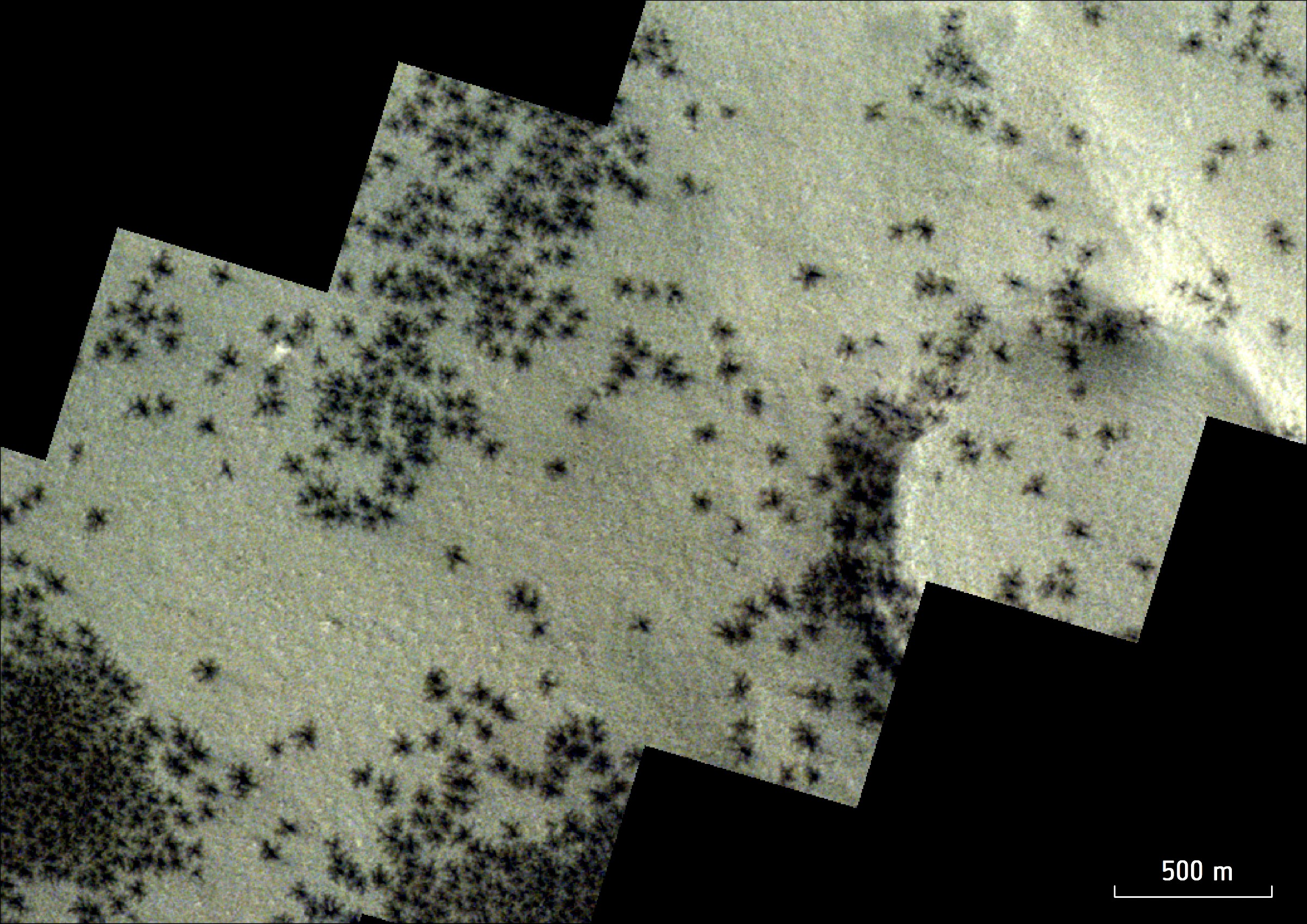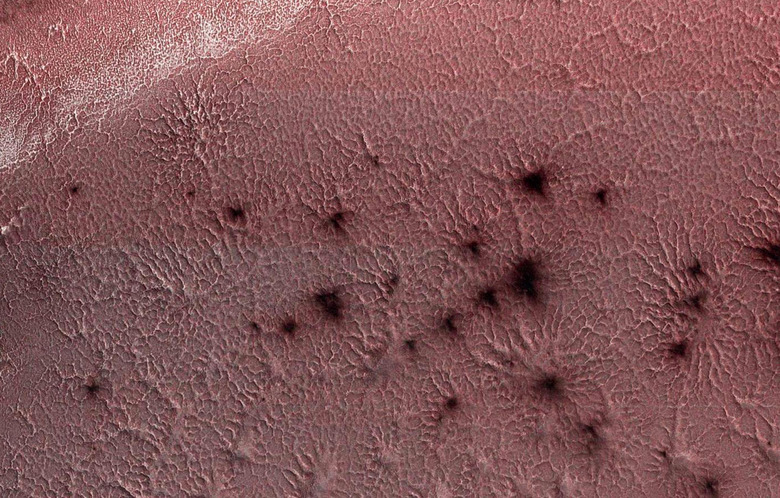NASA Recreated Mars' Iconic 'Spiders' In A Lab For The First Time Ever
In a first-of-its-kind experiment, NASA recreated the conditions needed to make the iconic Mars "spiders" seen on the Red Planet. Earlier this year, the Mars Express captured photo evidence of these spiders on Mars, giving us a good look at them. However, now NASA has taken things a step further to prove it could replicate the process here on Earth.
See, the spiders that Mars Express captured evidence of on Mars aren't actually spiders. Instead, they're a type of eruption plume found in the Martian soil. As such, NASA wanted to see if it could recreate the conditions needed to make the formations appear. It took a few tries, but the space agency seems to have been successful.
To recreate the Mars spiders, NASA started by super chilling a Martian soil simulant in a container that was submerged into liquid nitrogen. From there, the simulant was placed into JPL's Dirty Under-vacuum Simulation Testbed for Icy Environments (DUSTIE), and the air pressure was reduced until it reached levels similar to Mars' southern hemisphere.

Next, NASA sent carbon dioxide gas flowing into the chamber through a bright yellow sponge, allowing it to diffuse into the chamber. The gas was condensed from gas to ice over the course of three to five hours, and a heater inside of the chamber helped warm the simulant from below.
This cracked the ice, and after several tries, the researchers were able to capture a plume of carbon dioxide actually erupting from within the soil simulant, creating a replica of the Mars spiders like we've seen in the footage captured by the Mars express.
It's honestly quite a beautiful accomplishment. Proving that carbon dioxide plumes were the most likely culprits in the spiders' formation will help us understand the Martian surface a lot better. That's vital, especially for when we start sending humans to Mars.
